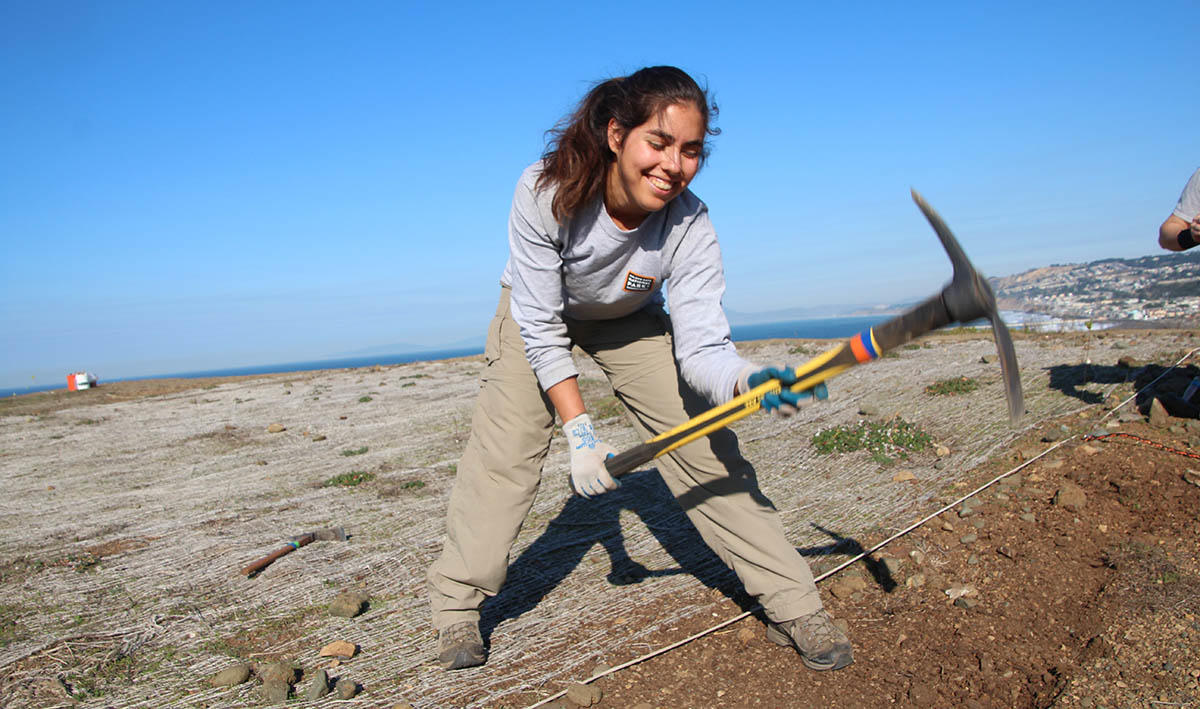

By Laurasia Holzman Smith
Park Stewardship intern
Take a walk up to Mori Point in the spring and you’ll be amazed by the display of wildflowers. Yet over the years, with higher visitation and more compaction of the soil, we’ve seen a reduction in the bloom. This winter, we’re ready to change that.
Direct seeding experiments at Mori Point in the last few years have proven to be successful, as they’ve brought an increase in the number of blooming wildflowers each spring. Plans for this December involve further expansion of the direct seeding plots to 300 square meters—that’s three times the size of last year! Hopefully this means we’ll be seeing three times more wildflowers in the spring of 2019.
If you’ve recently visited Mori Point, you may have noticed the trail now has low fencing put up. The goal of the fencing is to reduce the compaction of the soil caused by the combined, inadvertent impact of hikers, bikers, and animals roaming throughout the Point. While wildflowers do well with some disturbance, too much can reduce the germination rate, which means less for our eyes to enjoy.

Direct seeding involves using various tools, such as pick mattocks, pulaskis, and hand picks, to decompact the soil. Once the soil has been broken up, a mixture of wildflower seeds, collected locally from Mori Point, are dispersed throughout the area. The spreading of the seeds is followed by light mulching, which acts to help the soil retain moisture, as well as suppress weeds. Lastly, the area is covered in jute netting, an erosion control fabric, that keeps the seeds from blowing away. This is no easy task, so if you happen to take a walk to the Point this December and see our team working in the process, know that we are preparing the ground for a beautiful springtime show of colors and life.
Some of the species you can expect to see this coming spring include: Oregon gumweed (Grindelia stricta), farewell to spring (Clarkia rubicunda), varicolored lupine (Lupinus variicolor), American wild carrot (Daucus pusillus), California goldfields (Lasthenia californica), tidy tips (Layia platyglossa), and sky lupine (Lupinus nanus). Now let’s hope for some rain and see how our December of direct seeding pays off!